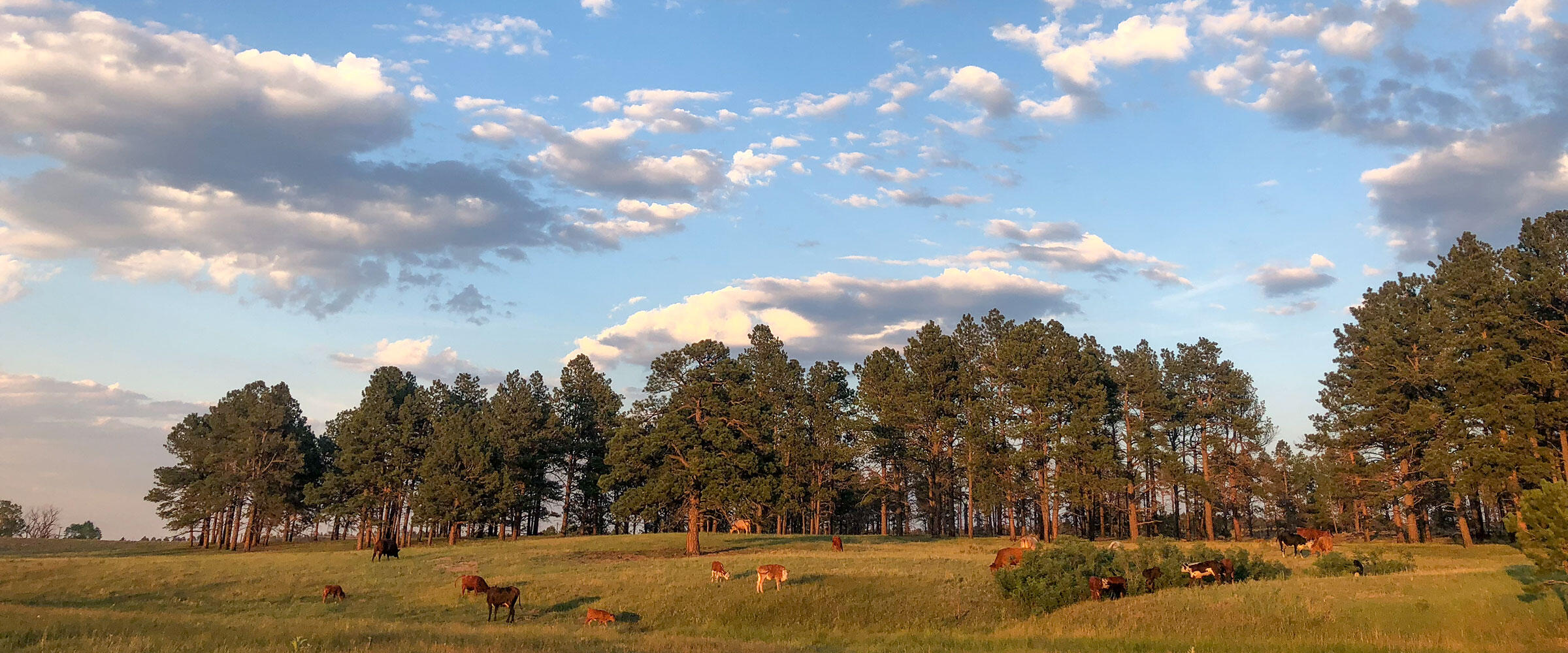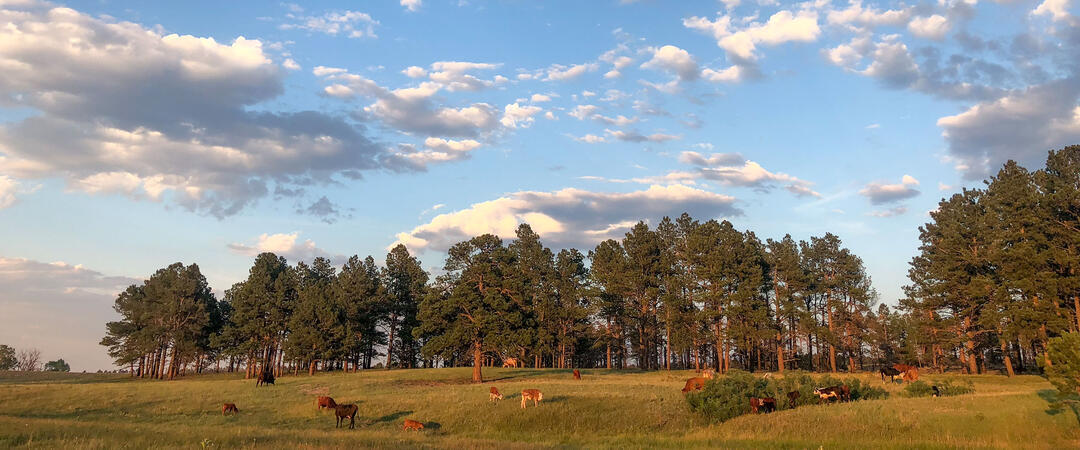We’re currently implementing a forest restoration project at Kiowa Creek Ranch in Colorado Springs, in partnership with High Country Management and forestry professionals. The forest has been stressed by tree overcrowding, the effects of a fire in 2013, pine beetles, and drought. Our goals are to restore its resilience to those stressors and improve wildlife habitat. We understand that changing the landscape can be alarming, but being a good steward means actively managing the land to restore and maintain its health in the long term. Here are some common questions and answers about the work we're doing.
What are you doing? Why are you cutting trees?
We’re selectively thinning trees on Audubon’s Kiowa Creek Ranch. Before European settlement, the forest here evolved with fires for thousands of years. With frequent fire, the forest was much more open than it is today. In the last century, those fires were suppressed. This led the forest to grow unnaturally dense and uniform. Under these conditions, the forest has become unhealthy and vulnerable to disease and pest outbreaks and severe fires. Selectively cutting some of the trees is a crucial first step in restoring the health and resilience of the forest.
What are your goals?
Audubon has been working with forestry and bird experts to develop a forest management plan over the last several years. Audubon and our partners want to manage towards a healthy resilient forest that supports the birds and wildlife that call the ranch their home. The plan was developed with birds and wildlife first in mind. The thinning activities you are seeing today are meant to create a much healthier habitat that birds and other wildlife can thrive on for years to come.
Isn’t cutting trees bad for wildlife?
Not the way we're doing it. When the forest grows unnaturally dense and uniform, it supports fewer species. This is because different species need different forest types to survive. Many of the species native to the forest here evolved with an open forest. Flowers, grasses, and shrubs that wildlife feed on can’t grow under a dense canopy of trees. By thinning some of the trees (while retaining a mosaic of some denser clumps) we’re restoring habitat that native plants and wildlife need.
Additionally, when the forest is dense and uniform, trees are prone to be killed by fires, pests, and disease in large numbers. By thinning, we’re helping prevent that and making it more resilient to climate change.
But it looks ugly.
While the forest may look barren immediately after thinning, we expect a flush of flowers and grasses to return next spring. Thinning trees allows other plants to obtain more sunlight, water, and nutrients. Thinning is an investment in the future of the forest. It may look messy right now, but it would look a lot worse if another severe wildfire were to kill all the trees.
How do you know you’re right?
Forest thinning as part of forest restoration is a widespread, scientifically-backed management technique used by forest managers across the continent, including the Colorado State Forest Service, US Forest Service, and The Nature Conservancy. Our project at Kiowa Creek Ranch is being planned and advised by state, federal, and non-profit biologists and foresters.
Are you developing the property?
Absolutely not. Audubon is a conservation organization and the reason we own and manage Kiowa Creek Ranch is to conserve it as undeveloped bird habitat.






